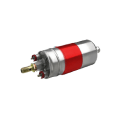The Thermostat: The Tiny Yet Mighty Engine Temperature Regulator
The car thermostat, although small, is pivotal in maintaining your engine's ideal operating temperature. This seemingly minor valve controls coolant flow, keeping the engine in its peak performance range for efficiency. However, if the thermostat malfunctions, it can cause a chain of problems that significantly affect your vehicle's well-being and lifespan.
Temperature Sensing: The First Line of Defense
The core of the thermostat features a temperature-responsive component, typically a wax pellet or a bimetallic coil, strategically placed within the engine's coolant circulation route. This component acts as an initial safeguard, constantly monitoring the coolant's temperature as it flows through the engine.
The Closed Gate: Aiding Engine Warm-Up
Upon initial car startup, the engine begins in a cold state, and the thermostat remains closed. In this configuration, the thermostat blocks coolant flow to the radiator, redirecting it to circulate within the engine block. This deliberate action facilitates rapid engine warming by enabling the coolant to absorb and retain heat produced during the initial combustion phase.
Opening the Gate: Regulating Temperature
As the engine gradually warms up and the coolant temperature increases, the thermostat's temperature-sensitive component reacts accordingly. Once the coolant reaches the thermostat's activation temperature, usually between 180-200°F (82-93°C), the thermostat initiates its opening sequence, permitting coolant to circulate through the radiator.
This step is pivotal in managing the engine's temperature effectively. The radiator functions as a heat exchanger, dispersing surplus heat from the coolant before it re-enters the engine's cooling system. The thermostat plays a continuous role in regulating coolant flow, adapting to the engine's temperature fluctuations to maintain it within the optimal operating range.
Maintaining the Goldilocks Zone
The thermostat's role in controlling coolant flow is critical for keeping the engine within its "Goldilocks zone" — the perfect temperature range for efficient combustion, top-notch performance, and minimized wear and tear. If the engine runs too cool, it may result in incomplete combustion, heightened emissions, and decreased fuel efficiency. Conversely, excessive heat can lead to increased wear, potential component breakdowns, and severe engine damage.
By consistently regulating coolant flow, the thermostat guarantees that the engine operates within this optimal temperature range. This not only enhances performance and efficiency but also extends the engine's lifespan.
A Crucial Component for Engine Health
The thermostat, despite being frequently underestimated, serves a pivotal function in your car's engine health and performance. Its role in temperature regulation is essential for efficient combustion, emission reduction, and averting costly repairs caused by overheating or excessive wear.
By grasping the thermostat's function and identifying possible failure indicators, you can proactively preserve your vehicle's cooling system. This approach ensures a seamless, efficient, and enduring engine performance.
Symptoms of a Faulty Thermostat
Detecting a failing thermostat is critical to prevent potential complications. Here are several key indicators to be aware of:
1. Engine Overheating: This is the most common and worrisome sign, suggesting that the thermostat might be stuck in a closed position, hindering coolant flow.
2. Engine Underheating: Conversely, if the thermostat is stuck open, the engine may struggle to reach its optimal temperature, especially in colder climates, leading to inefficient combustion and increased fuel consumption.
3. Temperature Fluctuations: Erratic readings on the temperature gauge, fluctuating between hot and cold, could signal a thermostat that is intermittently opening and closing, disrupting the engine's temperature regulation.
4. Heater Malfunction: A failing thermostat can result in inadequate engine heating, causing the car's heater to produce little or no heat, which can be particularly noticeable during colder weather.
5. Coolant Leaks: Leaks observed around the thermostat housing may indicate a failing thermostat gasket or seal, leading to coolant loss and potential overheating issues.
Being vigilant for these warning signs enables early detection of thermostat problems, allowing you to address them promptly and maintain your vehicle's optimal performance and longevity.
The Cost of Thermostat Replacement
The expense associated with replacing a car's thermostat can fluctuate based on factors such as the vehicle's make, model, and production year. Typically, the combined cost of parts and labor falls within the range of $300 to $600. Nevertheless, luxury cars and those with thermostats that are challenging to access may entail higher expenditures.
Driving with a Bad Thermostat: Risks and Consequences
Continuing to drive with a malfunctioning thermostat might seem convenient, but it's advised against. If the thermostat remains closed, extended driving can result in significant overheating, potentially causing severe engine damage. Conversely, if the thermostat is stuck open, you might notice reduced fuel efficiency, increased emissions, and gradual performance decline. Addressing thermostat issues promptly is crucial to maintain your vehicle's optimal functionality and prevent costly repairs down the road.
Diagnostic Trouble Codes and Check Engine Lights
A malfunctioning thermostat often activates the check engine light and stores a diagnostic trouble code (DTC) associated with engine temperature regulation. These codes offer valuable information about the underlying problem, aiding in pinpointing the issue and facilitating the repair process. Consulting these codes can be instrumental in diagnosing and resolving thermostat-related issues effectively.
Some typical diagnostic trouble codes (DTCs) associated with thermostat problems are:
- P0128: Coolant Thermostat (Coolant Temperature Below Thermostat's Operating Temperature)
- P0125: Inadequate Coolant Temperature for Closed-Loop Fuel Control
- P0126: Insufficient Coolant Temperature for Stable Engine Operation
- P0127: High Intake Air Temperature
- P0129: Low Barometric Pressure
These codes usually signal issues with the thermostat, coolant temperature, or related sensors. They serve as valuable indicators for diagnosing and resolving challenges related to engine temperature control.
Identifying a Stuck Thermostat
To ascertain whether your thermostat is stuck in a closed or open position, observe the following indications:
If it's stuck closed, you may notice rapid engine overheating shortly after starting the vehicle, accompanied by a temperature gauge that quickly rises to the high end of its range.
On the other hand, if the thermostat is stuck open, you might experience an engine that takes an unusually long time to reach its normal operating temperature. Additionally, the heater may fail to generate warm air, even after the engine has been running for a while.
Thermostat Replacement: DIY or Professional?
Replacing a car thermostat involves several steps, including draining the coolant, removing the thermostat housing, installing the new thermostat, and refilling the coolant system. While individuals with DIY experience and the right tools can attempt this task, it's often best to seek professional help. Mishandling the thermostat replacement process can lead to overheating problems and potential engine damage if not done correctly.
In summary, despite its small size, the thermostat is crucial for maintaining optimal engine temperature, impacting performance, efficiency, and engine lifespan. Recognizing signs of a failing thermostat and addressing them promptly can prevent costly repairs later on. If you're facing thermostat-related issues, consulting a professional mechanic is recommended for accurate diagnosis and repair.
Instant Car Fix offers expert diagnostics and repair services for thermostat issues. Our experienced mechanics have the knowledge and tools to assess and resolve thermostat problems accurately, ensuring your vehicle performs at its peak. Whether it's diagnosing overheating issues or replacing thermostats, Instant Car Fix delivers reliable solutions to keep your car running smoothly.
Verified
Verified

Verified
Verified
Verified































